Coin-Counting Clock
Coin-Counting Clock
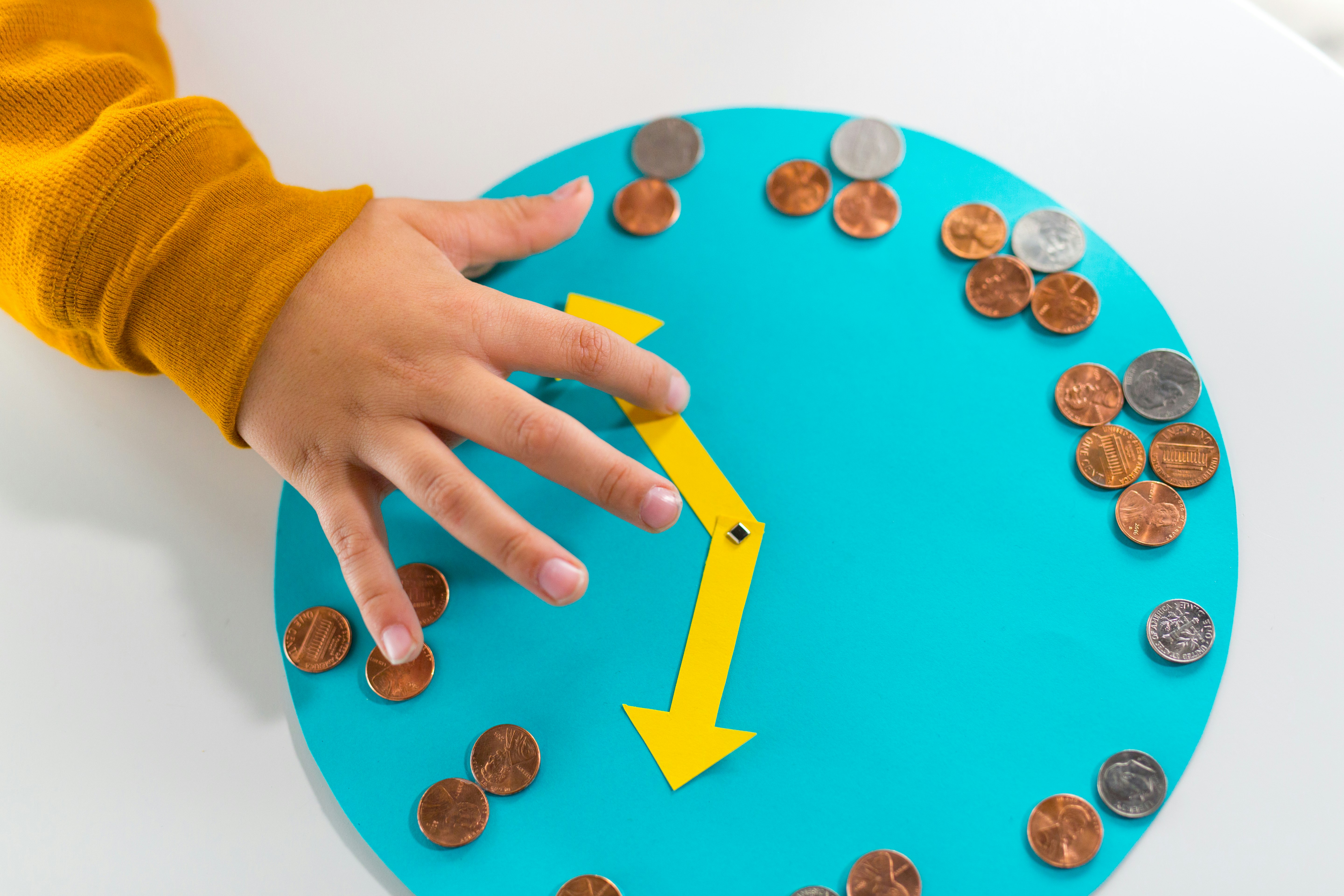
Kids can learn to tell the time and count money with a fun clock.
School Year: 4–6
Activity time: 30–45 minutes (plus 30 minutes of drying time)
STEAM Subjects: Maths (Telling Time, Currency), Art
Supplies:
- Dinner plate
- 30x30 cm sheet of paper
- Small scrap sheet of paper (approx. 10x10 cm)
- Loose change (21 x 1p coins, 5 x 5p coins, and 3 x 10p coins)
- Elmer’s Extra-Strength Glue Stick
- Brad
- Scissors
- Ruler
- Pencil
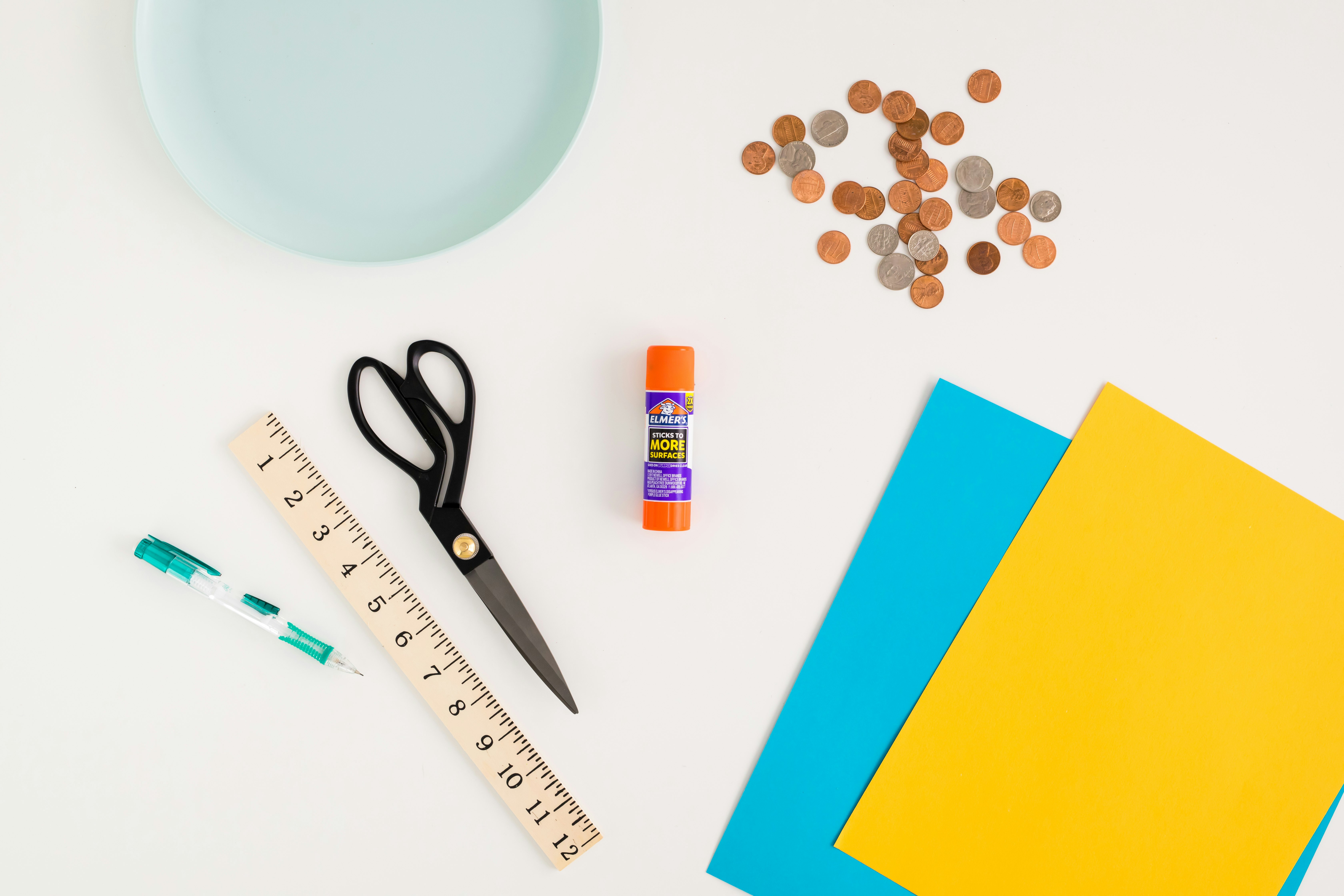
Instructions:
- Use the dinner plate to trace a circle onto the 30x30 cm piece of paper. Use scissors to cut out the circle.
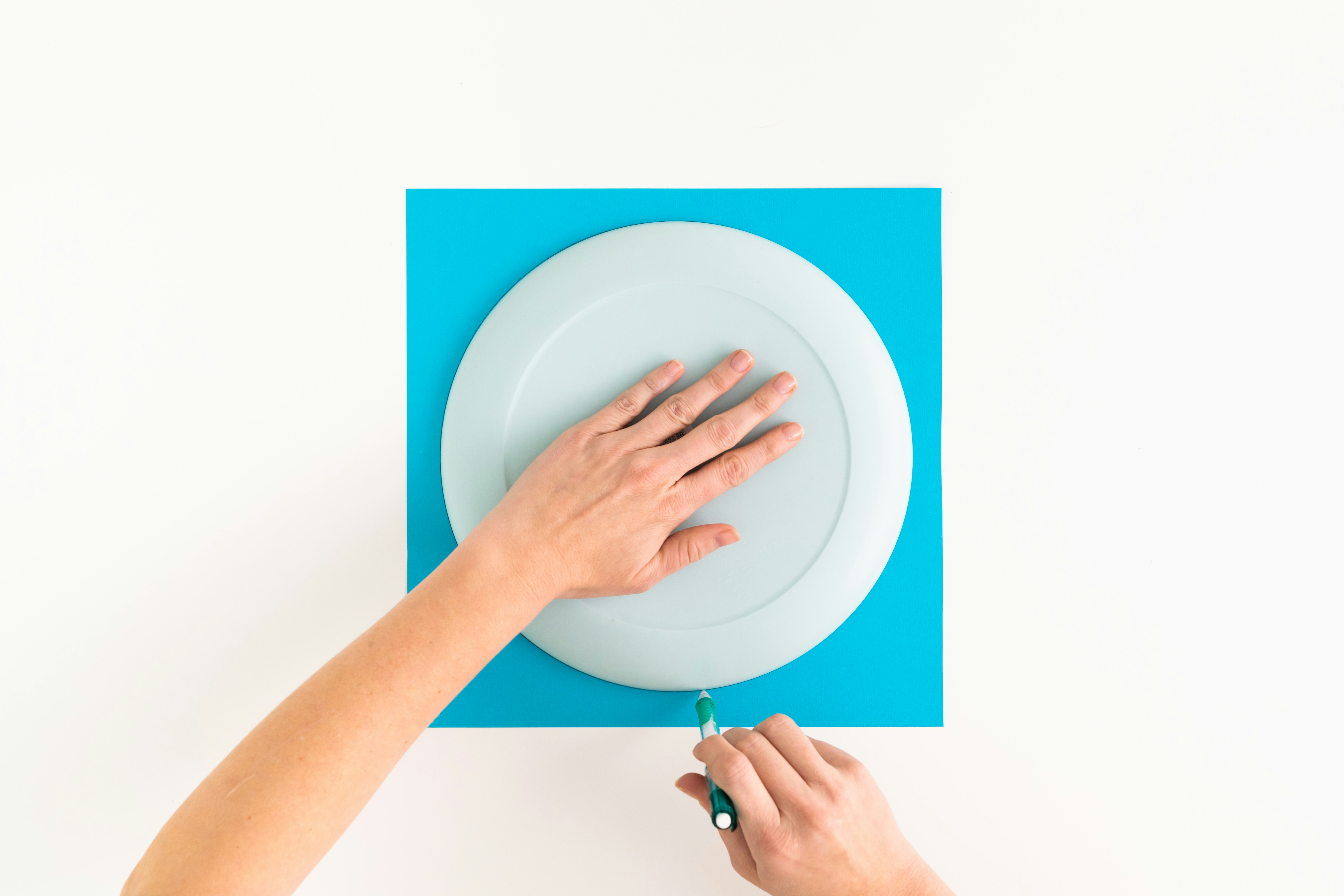
- Draw and cut out arrows from a scrap sheet of paper.
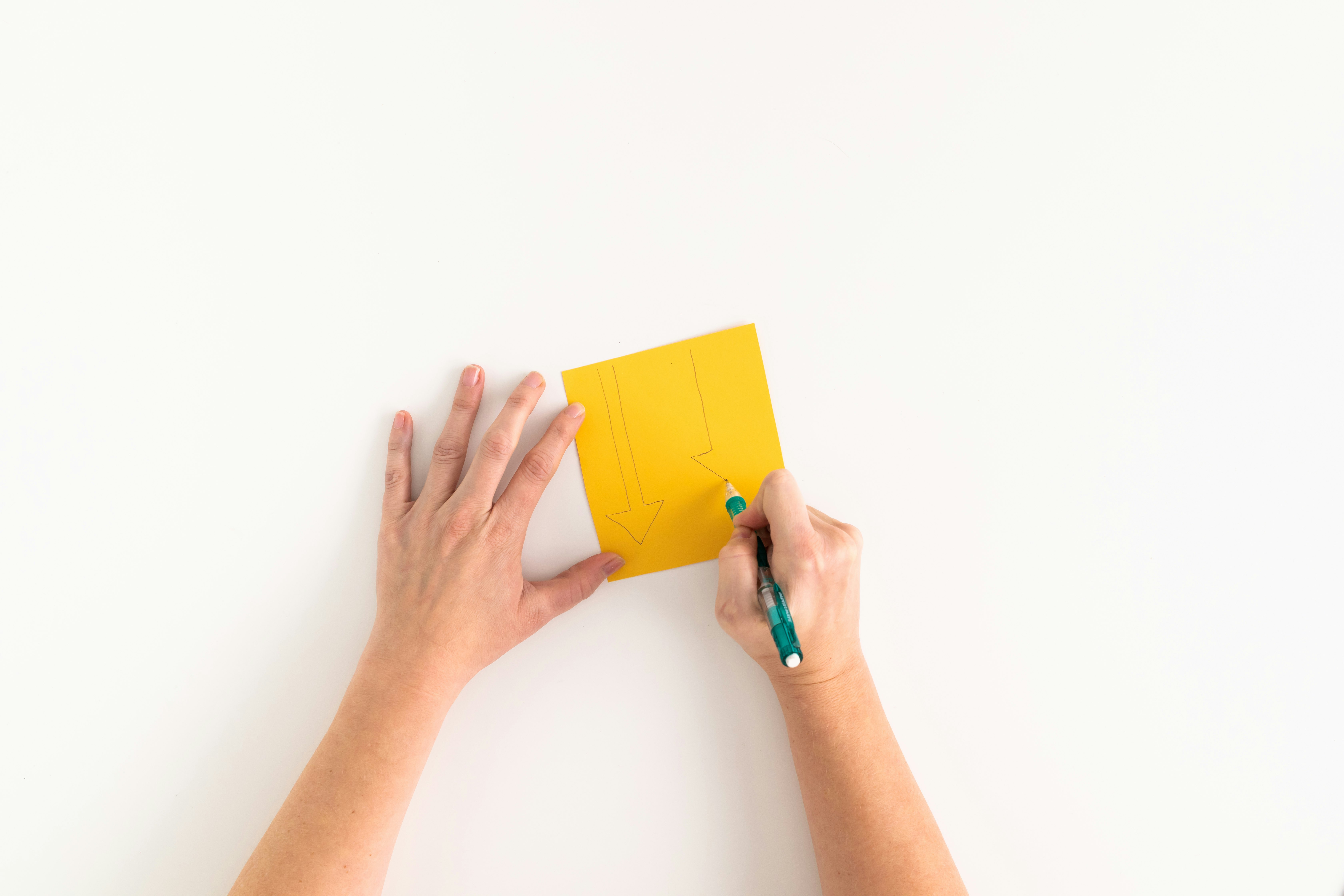
- Attach the arrows to the centre of the circle with a split pin paper fastener.
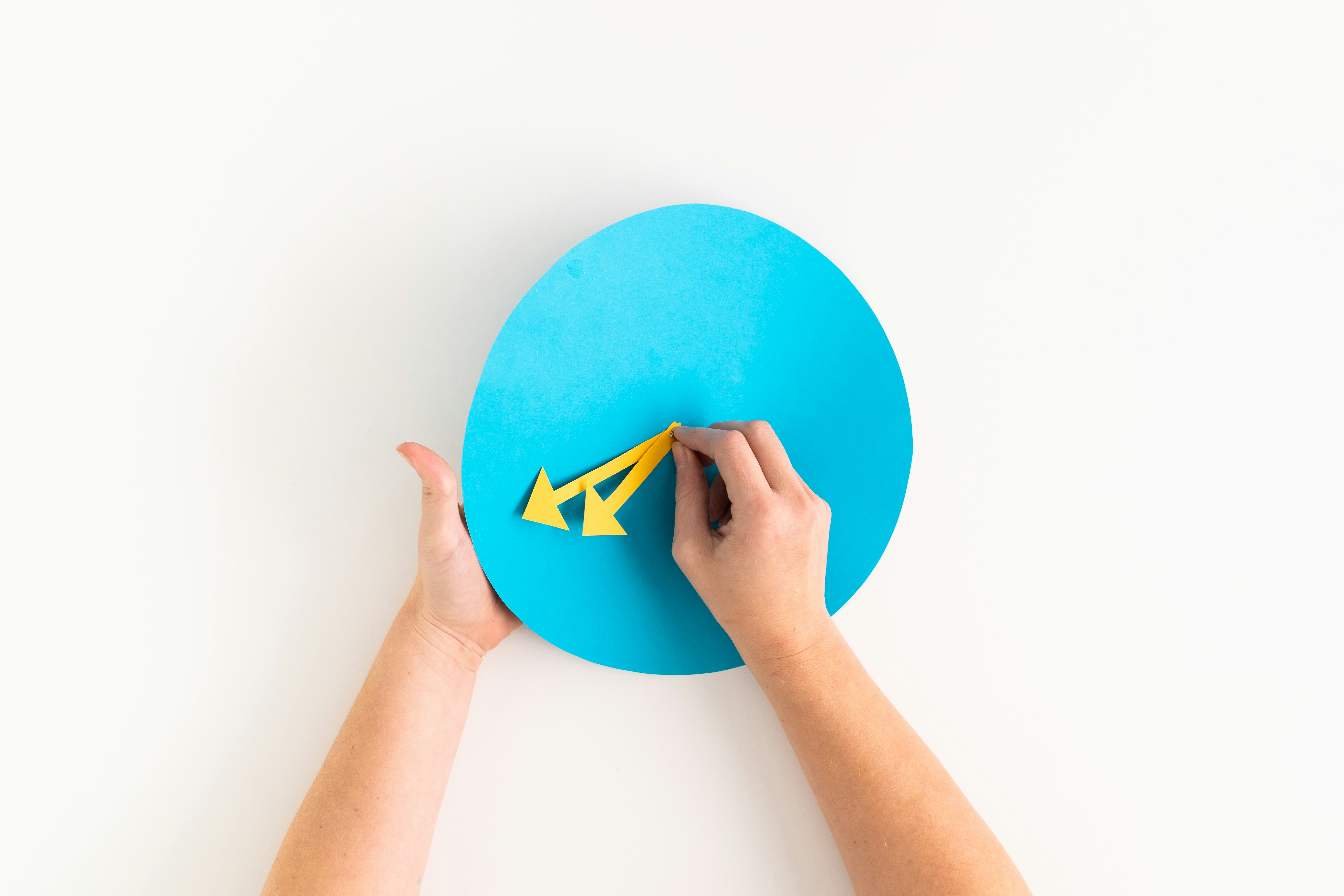
- Count out the coins, using the 1ps, 5ps, and 10ps to represent numbers on the clock. For example, 1 o’clock is represented by one penny. 6 o’clock is represented by a 5p and a 1p.
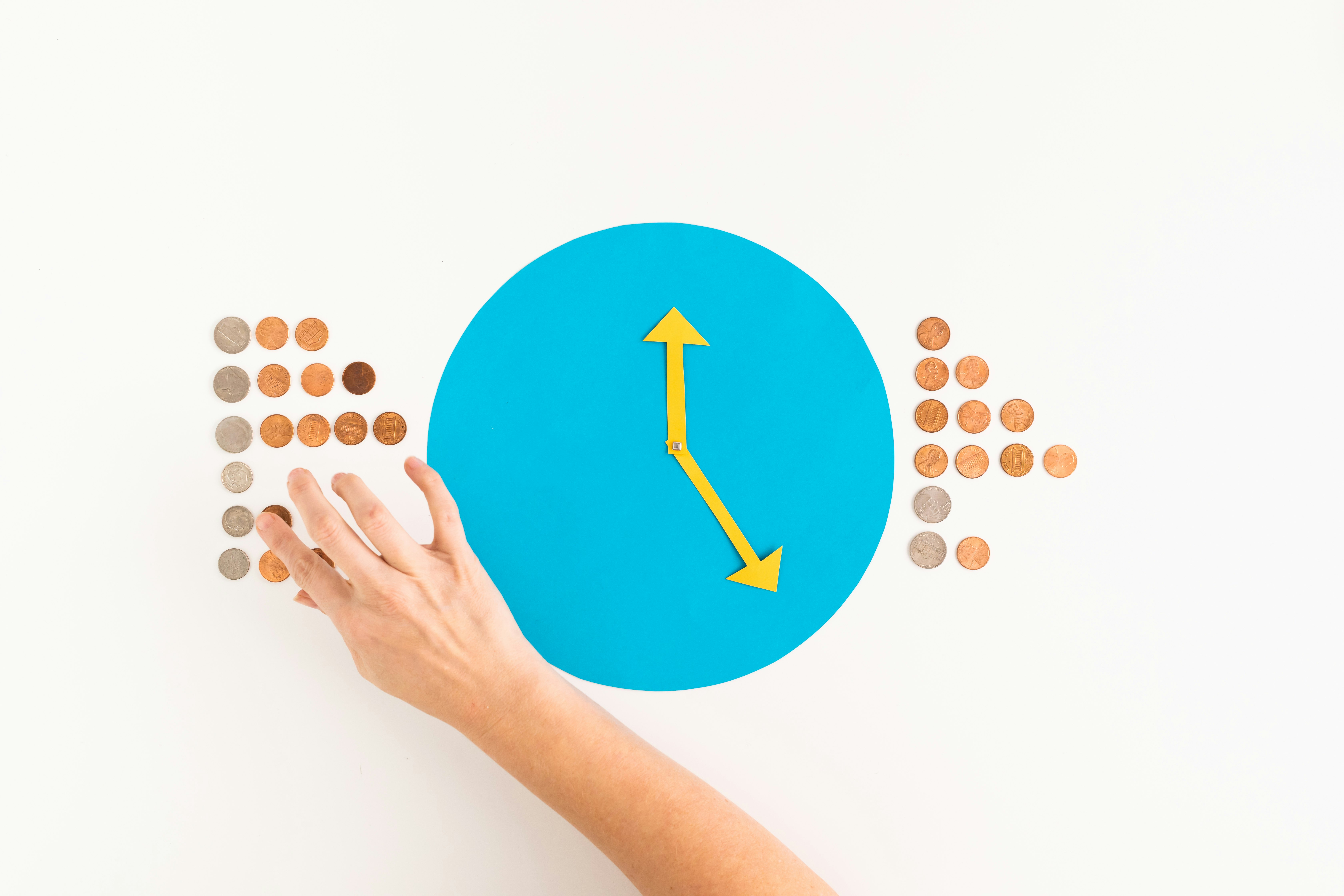
- Glue the coins onto the clock using the Elmer’s Extra-Strength Glue Stick. (If you’re worried that the glue stick isn’t strong enough to hold the coins, don’t worry! It is!)
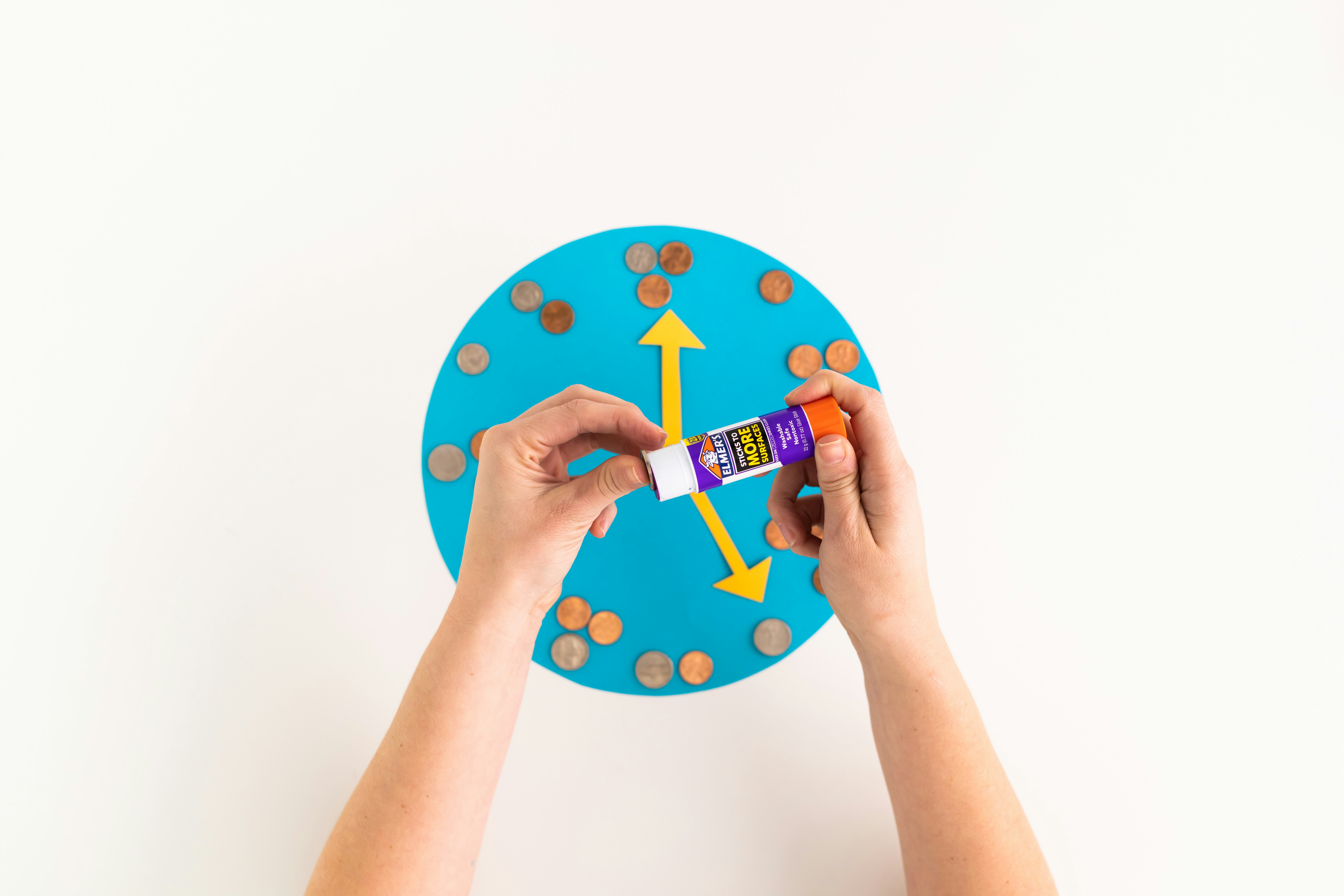
- All done! Practise moving the hands of the clock and adding up the coins.
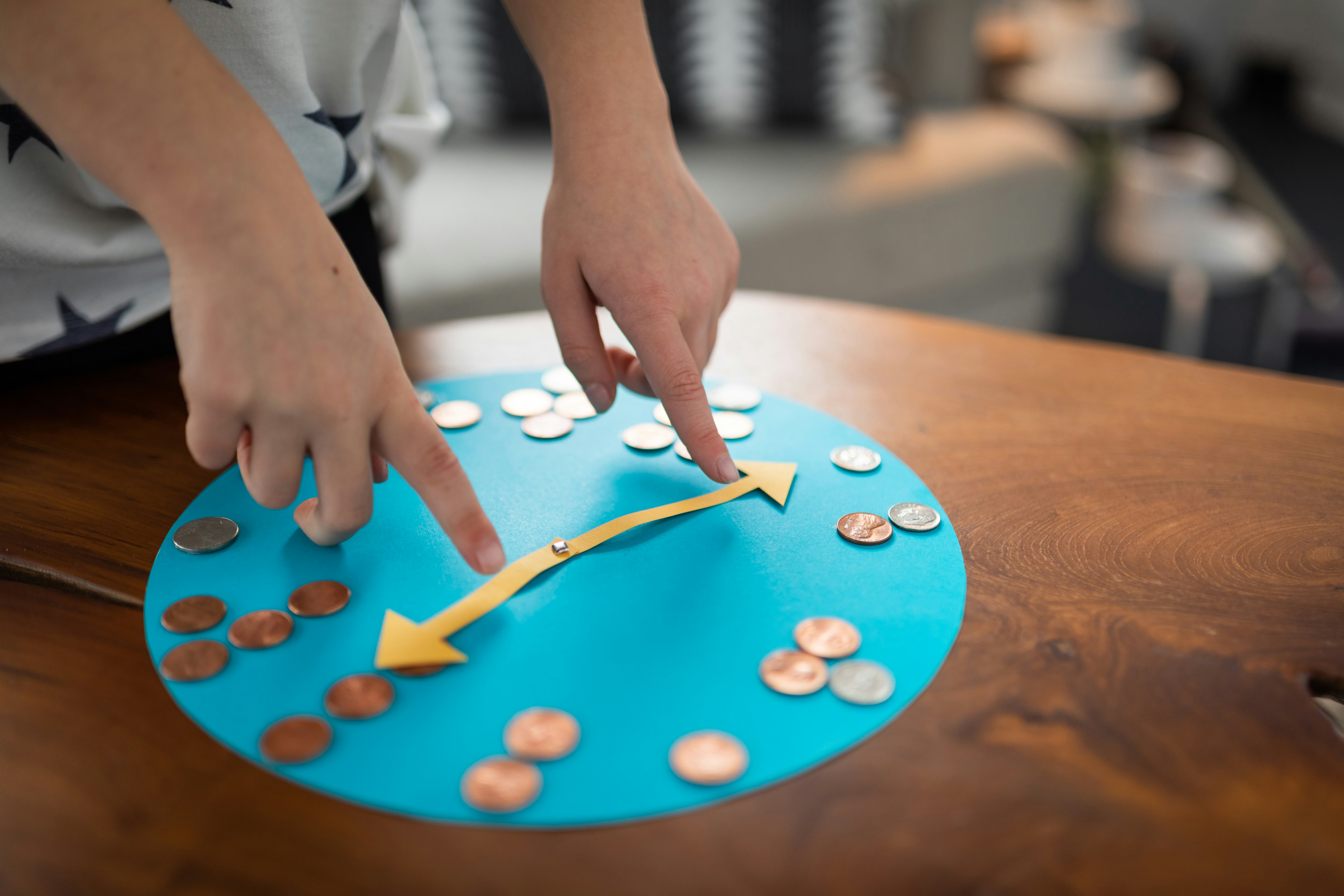
Learn More – STEAM Extensions:
- Have you seen a clock like this lately? Possibly the answer is no. Many clocks that we see in the modern world are digital. That means they use numerals to represent the time. The clocks you see in your car, on your appliances, on your mobile phone or on your iPad are all digital clocks. Your coin-counting clock is known as an analogue clock. That means the clock has hands to show the minutes and hour of the time. The shorter hand indicates the hour, and the longer hand indicates the minutes. This type of clock is a bit harder to read than a digital clock, but you will still find analogue clocks like this in schools, medical offices and older buildings. It’s helpful to be able to read both kinds of clock, so you’re able to easily know the time wherever you are!
- What time is it? Practise using your coin-counting clock to show the
time! The short hand goes on the hour. So if it is 3 o’clock, the short hand should be on the 3.
Easy peasy, right? Finding where to put the long hand is a little bit trickier. The long hand
represents the minutes. Since there are 60 minutes in an hour, the long hand moves 60 times every
hour. You would have to make your clock a whole lot bigger to place coins to represent every minute,
wouldn’t you? To simplify, the larger numbers on your coin clock (represented by the coins) are each
worth five minutes (because 60 divided by 12 = 5). So if your long hand is on the 1, then it is
representing 5 minutes. If the long hand is on the 4, it represents 20 minutes (which is 4x5).
So if it’s 3:25, the short hand is on the 3, and the long hand is on the 5 (which is 5x5). See if
you can figure out how to make the following times on your clock:
- 5:20
- 10:15
- 12:30
- 4:45
- How do people tell the time? Clocks are not the only way we tell the time! There are actually many ways that people tell the time. Other common time-telling instruments include watches, marine chronometers, hourglasses, atomic clocks and sundials. How many other time-telling devices have you used? How many can you find in your house?
Level-Up – Options for Older Kids:
- Coins have possibilities! How many combinations of coins can you use to create the numbers on your clock? Let’s find out. For example, to make the number 10, you could use one 10p, but you could also use two 5ps, one 5p and five 1ps, or even ten 1ps. Go around the clock and see how many different combinations of coins you can use to make the numbers.
- Find the centre of the circle. There are lots of methods for finding the centre of a circle, but this one is both fun and easy. Draw a chord across the circle. A chord is a straight line that’s drawn near the edge of the circle but doesn’t cross the centre. Once you have one chord, draw two more chords in any place on the circle that are the exact same length as your first chord. Now you have three chords, draw a dot on the exact middle of each chord. Then use the end of your ruler to draw a line from each dot that is exactly perpendicular to each chord. Voilà! The place where the three lines intersect is the centre of the circle!
Standards Alignment:
Next Generation Science Standards
- CCSS.MATHS.CONTENT.1.MD.B.3: Tell and write the time – Tell and write the time in hours and half-hours using analogue and digital clocks.
- CCSS.MATHS.CONTENT.2.MD.C.7: Work with time and money – Tell and write the time from analogue and digital clocks to the nearest 5 minutes, using a.m. and p.m.
- CCSS.MATHS.CONTENT.2.MD.C.8: Solve word problems involving notes, 20ps, 10ps, 5ps, and 1ps, using £ and p symbols appropriately. Example: If you have two 10ps and three 1ps, how many pence do you have?
3+
glueStickAll
paper
everydayCrafts